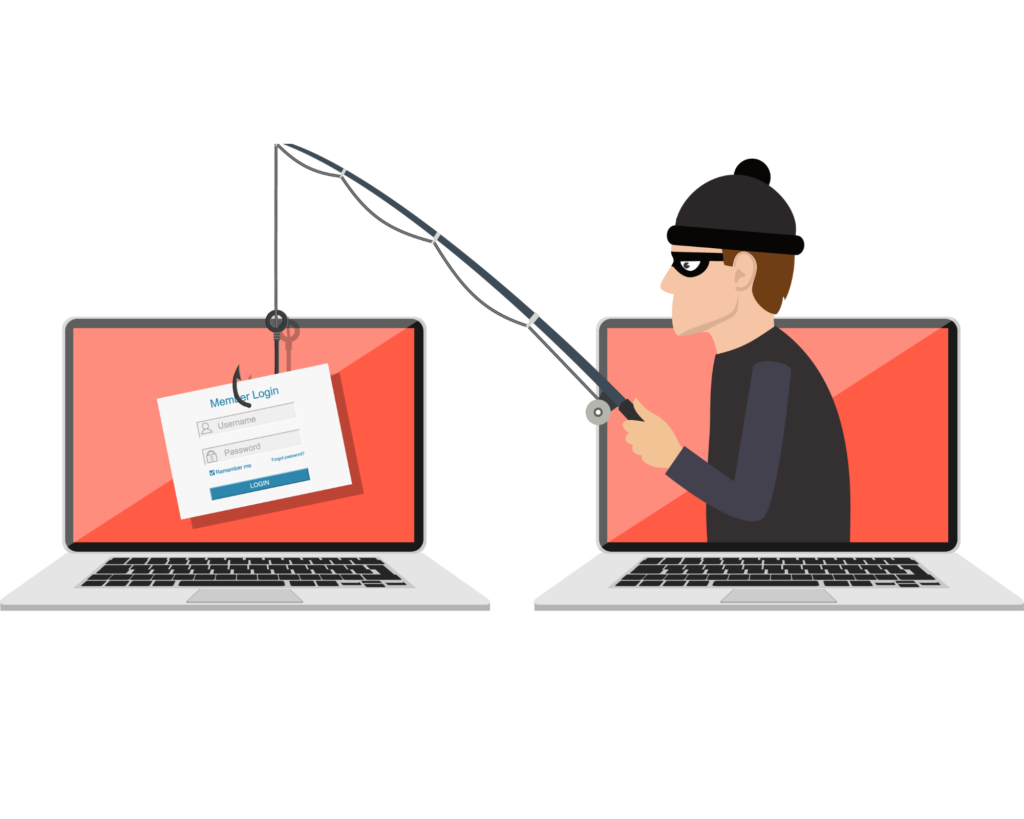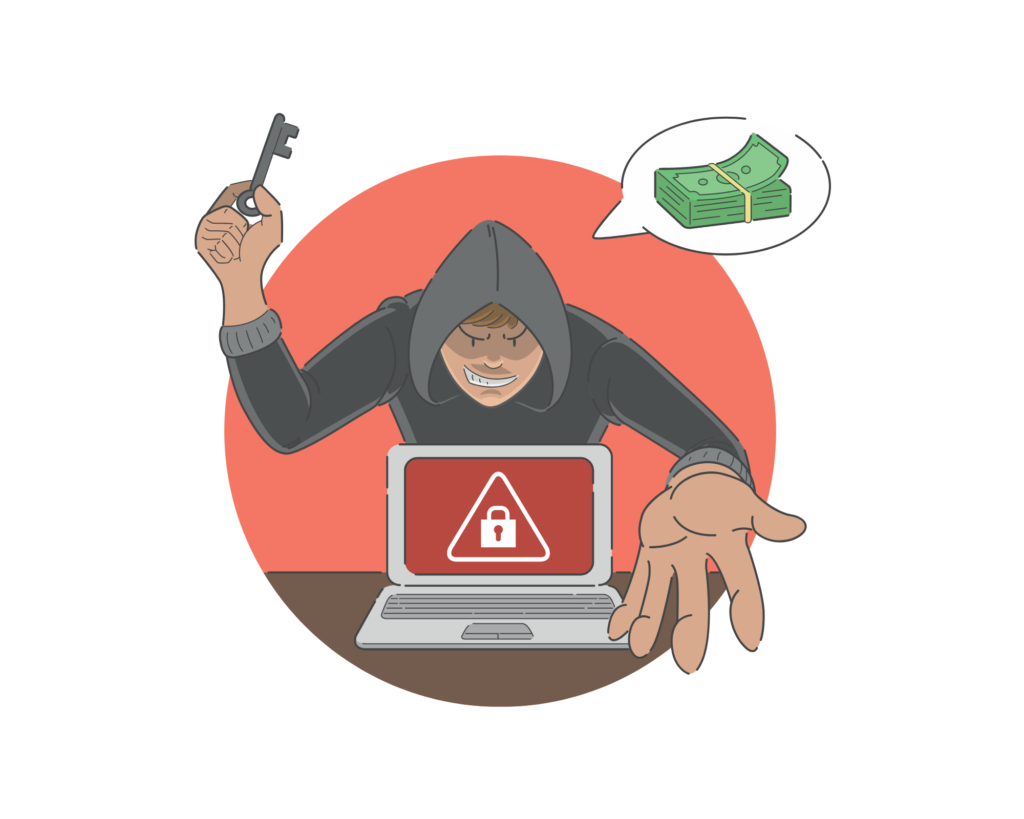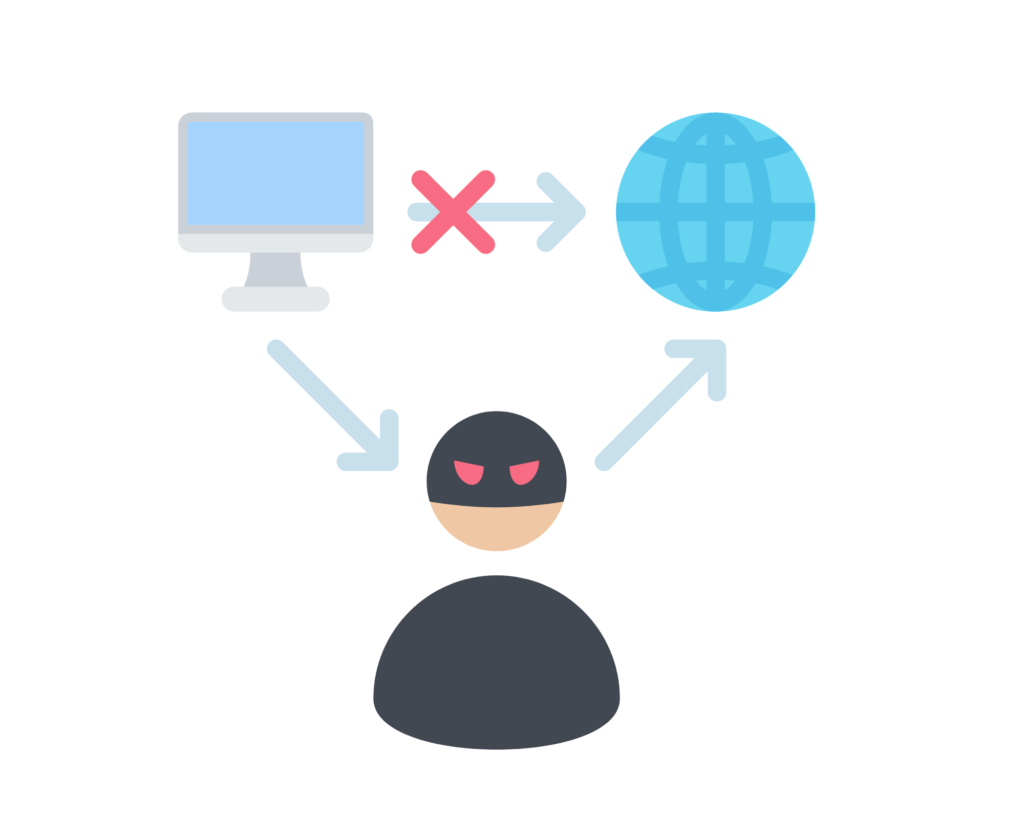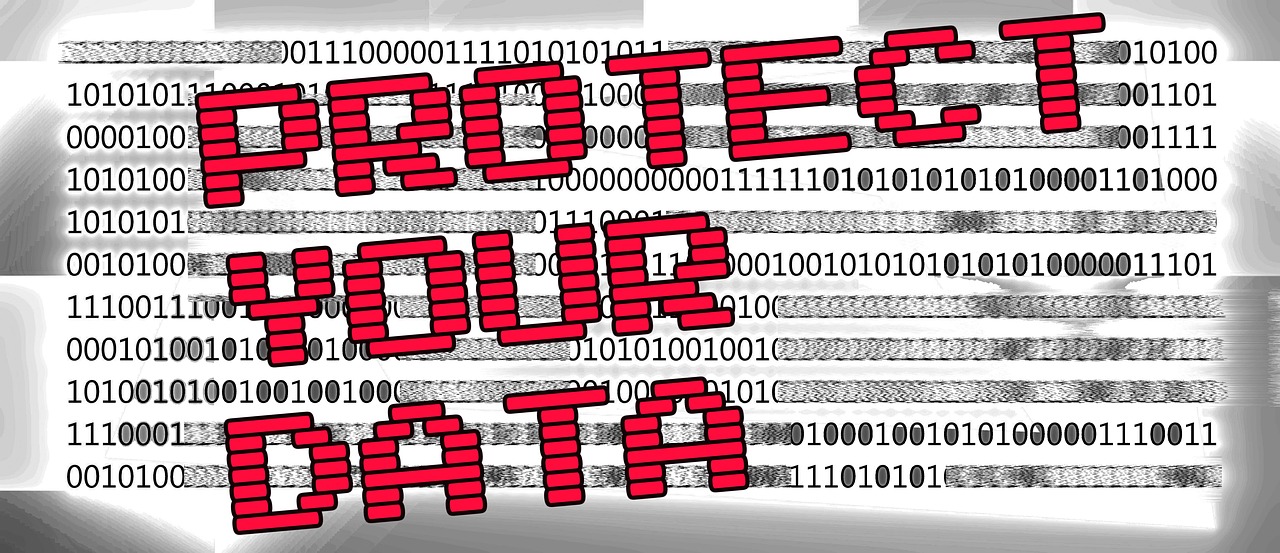In today’s digital age, cybersecurity is more important than ever before. As we rely on technology for almost everything, we must also be aware of the potential dangers that exist online. Cybersecurity threats can have serious risks to our personal information, financial data, and even our privacy. This article aims to highlight the “Top 10 Cybersecurity Threats You Should Know About.” By understanding these threats, you can better protect yourself and your online activities from potential harm. Whether it’s phishing, ransomware, or other malicious attacks, being informed is the first step in staying safe and secure in the digital world.
Join us as we explore the most prevalent cybersecurity threats and learn valuable tips to safeguard our online presence. Let’s empower ourselves with knowledge and take the necessary precautions to navigate the internet safely.
Number 1 : Phishing Attacks
Phishing is a sneaky and deceitful cyber trick that scammers use to fool people. They pretend to be trustworthy sources, like banks or companies, and send fake emails or messages. These tricky messages look real, but they aim to steal your private information, such as passwords or credit card details. If you unknowingly share your info with them, they can use it to steal your money or commit other crimes. Phishing can lead to identity theft and financial loss, so it’s crucial to stay alert. Remember to double-check email addresses, links, and be cautious when sharing personal data online. By being aware and cautious, you can protect yourself from falling into the phishing trap and keep your information safe.

NUMBER 2 : Ransomware Attacks
Ransomware is a nasty type of cyber assault that seeks to hold your computer and files hostage. It sneaks into your device through deceptive links or infected files and then locks your data, making it inaccessible. The attackers demand a ransom, usually in cryptocurrency, to provide a decryption key and unlock your files. Paying the ransom is risky and doesn’t guarantee recovery. Ransomware attacks can cause severe disruptions, affecting individuals and organizations alike. To protect against ransomware, ensure you have up-to-date antivirus software, regularly back up your data, and be cautious when clicking on unfamiliar links or attachments. By staying vigilant and having strong cybersecurity measures in place, you can defend against the threat of ransomware and safeguard your valuable information.

NUMBER 3 : Malware and Viruses Attacks
Malware and viruses are harmful computer programs that sneak into your device and cause trouble. They can infect your computer through infected websites, emails, or downloads. Once inside, they can steal your personal information, slow down your device, or even cause it to crash. Viruses are a type of malware that spreads from one computer to another, like a contagious illness. Malware and viruses can be tricky to detect, but having good antivirus software can help protect your device. To stay safe, avoid clicking on suspicious links or downloading files from untrustworthy sources. Regularly update your software and be cautious when opening emails from unknown senders. By being vigilant and taking preventive measures, you can shield your device from malware and viruses and keep your digital life secure.
NUMBER 4 : Data Breaches attacks
Data breaches are serious cyber incidents where unauthorized people get access to sensitive information. These breaches happen when security measures fail, allowing hackers to steal valuable data from organizations or individuals. The stolen information may include personal details, financial records, or even passwords. Data breaches can have devastating consequences, leading to identity theft, financial fraud, or reputational damage. In some cases, the stolen data is sold on the dark web or used for malicious purposes. To protect against data breaches, organizations and individuals must prioritize cybersecurity. Using strong passwords, encrypting data, and keeping software up to date are essential preventive measures. Regular security audits and employee training can also help identify vulnerabilities and reduce the risk of data breaches. By being proactive and vigilant, we can better defend against these digital intrusions and safeguard our sensitive information from falling into the wrong hands.
NUMBER 5 : Social Engineering Attacks
Social engineering is a clever cyber trick used by cybercriminals to manipulate people into revealing confidential information or performing actions they shouldn’t. Instead of using technical means, social engineers rely on psychological tactics, like deception and persuasion, to exploit human behavior. They may pretend to be someone you trust, like a friend, coworker, or even a company representative, to gain your trust. Once they have your confidence, they may ask for sensitive details, such as passwords or financial information. Social engineering attacks can happen through phone calls, emails, or even in person. Being cautious and skeptical is crucial in protecting yourself from these tricks. Always verify the identity of anyone requesting personal information, and never share sensitive data with unfamiliar or unverified sources. By staying vigilant and aware, you can outsmart social engineering attacks and keep your private information safe.
NUMBER 6 : DDoS Attacks
DDoS, which stands for Distributed Denial of Service, is a disruptive cyber assault that overwhelms a website or online service with a flood of traffic. The goal is to make the website inaccessible to legitimate users by causing it to crash or slow down significantly. DDoS attacks are launched from multiple sources simultaneously, making them difficult to defend against. Cybercriminals may use networks of compromised computers, known as botnets, to execute these attacks. The motive behind DDoS attacks can vary, from extortion attempts to acts of protest or retaliation.The impact of DDoS attacks can be severe, causing financial losses, reputational damage, and service disruptions. To mitigate the risk of DDoS attacks, organizations often employ specialized security measures and traffic filtering solutions. By having robust cybersecurity strategies in place, website administrators can better defend against DDoS attacks and maintain uninterrupted service for their users.
NUMBER 7 : Insider Attacks
Insider threats are security risks that come from individuals within an organization who misuse their access to cause harm. These insiders may be employees, contractors, or anyone with authorized access to sensitive data or systems. Insider threats can be accidental, such as unintentional data leaks, or intentional, like theft of confidential information. They might be motivated by financial gain, revenge, or even coercion.Insider threats can be challenging to detect as the perpetrators are already trusted within the organization. Implementing strong access controls, monitoring user activity, and conducting regular security awareness training can help mitigate insider threats. Building a culture of trust and open communication can encourage employees to report suspicious behavior and address potential threats early. By being vigilant and proactive, organizations can defend against insider threats and protect their valuable data and assets.
NUMBER 8 : Internet of Things (IoT) Vulnerabilities attacks
The Internet of Things (IoT) refers to the interconnected network of devices and objects that can communicate and exchange data over the internet. While IoT offers convenience and automation, it also introduces new cybersecurity risks. IoT devices, such as smart home appliances, wearables, and industrial sensors, may have vulnerabilities that cybercriminals can exploit. Weak default passwords, lack of security updates, and poor encryption are common issues in IoT devices. Exploiting IoT vulnerabilities can lead to unauthorized access, data breaches, or even control over connected devices. Hackers can use compromised IoT devices to launch larger-scale attacks, like Distributed Denial of Service (DDoS) assaults. To enhance IoT security, users should change default passwords, update device firmware regularly, and ensure that their home networks are secure. Additionally, manufacturers need to prioritize cybersecurity in IoT product design and support timely updates to address potential vulnerabilities, ultimately making the IoT ecosystem safer for all users.
NUMBER 9 : Man-in-the-Middle (MITM) Attacks
In a Man-in-the-Middle attack, a sneaky cybercriminal secretly intercepts communication between two parties without their knowledge. The attacker positions themselves between the sender and receiver, impersonating both sides to eavesdrop on or modify the messages being exchanged. This malicious interception can occur on unsecured Wi-Fi networks, compromised routers, or through phishing techniques. During a MITM attack, sensitive information, like login credentials or financial data, may be stolen or altered. Users are unaware of the breach, believing they are communicating directly with the intended recipient. To protect against MITM attacks, always use secure, encrypted connections when transmitting sensitive information, avoid public Wi-Fi for sensitive transactions, and be cautious when clicking on links or downloading attachments. By staying vigilant, you can safeguard your communication and thwart potential MITM attacks.

NUMBER 10 : Zero-Day Exploits attacks
Zero-day exploits are dangerous cyber attacks that target undisclosed software vulnerabilities. Cybercriminals exploit these weaknesses before the software developers are aware of them, giving no time to issue a fix or patch. This makes zero-day exploits particularly insidious as they catch users off-guard. Attackers can compromise computers, steal data, or gain unauthorized access to systems. Since there is no known defense against zero-day exploits, prevention is crucial. Keeping software up-to-date and using reputable security solutions can help reduce the risk. Additionally, staying cautious while browsing and avoiding suspicious websites or links can minimize exposure to potential zero-day threats. Software vendors often release updates once vulnerabilities are identified, so promptly installing patches is essential to stay protected against these unforeseen attacks. By staying vigilant and proactive, users can better defend against the dangers of zero-day exploits.
CONCLUSION
As we reach the end of our journey through the top cybersecurity threats, one thing is clear: staying safe in the digital world requires constant vigilance and awareness. The internet offers us incredible opportunities, but it also comes with risks that we must not overlook. By learning about the top 10 cybersecurity threats, you are now equipped with valuable knowledge to protect yourself and your digital assets. Remember to keep your software up-to-date, use strong and unique passwords, and be cautious when clicking on links or downloading files. Cybersecurity is a shared responsibility, and by taking steps to secure our online presence, we contribute to a safer digital environment for everyone. Let’s be proactive in defending against cyber threats and continue to educate ourselves on the ever-evolving landscape of cybersecurity. Together, we can navigate the internet with confidence and make the most of its vast possibilities while staying protected. Stay safe and cyber-aware!
